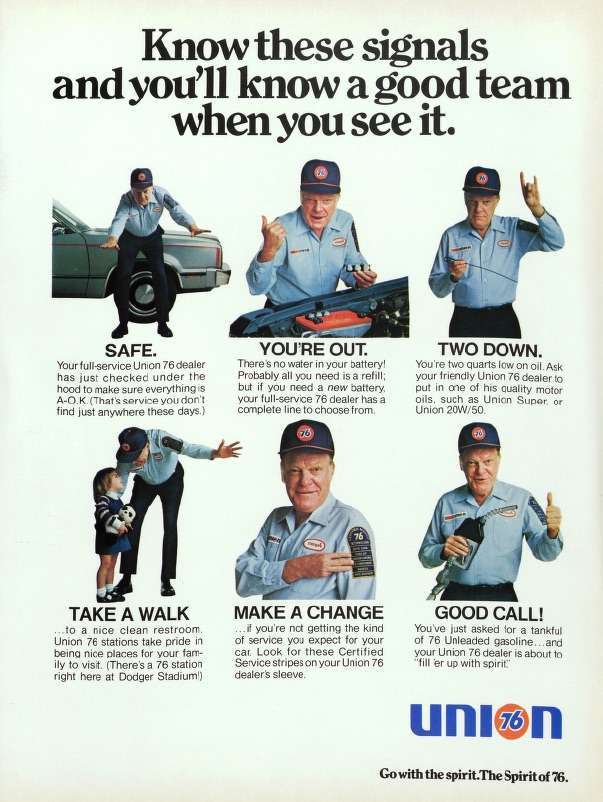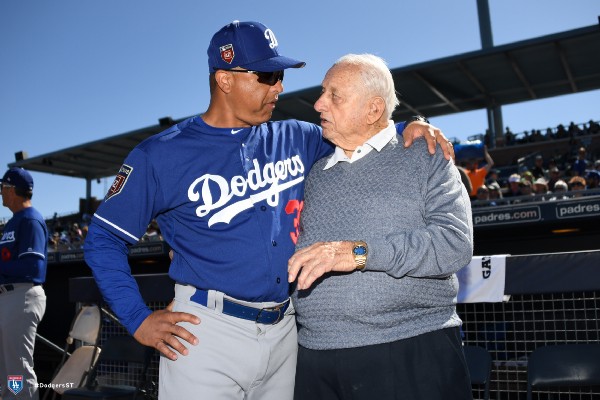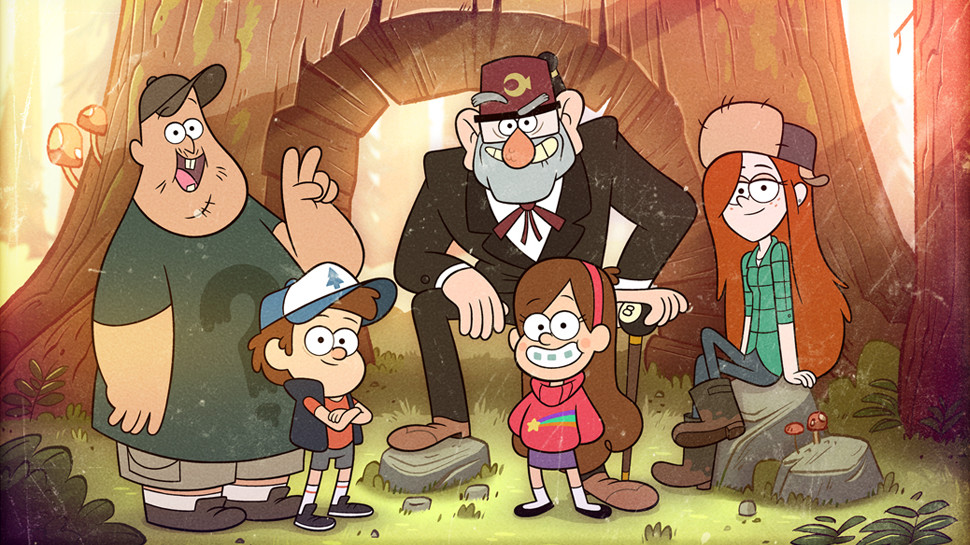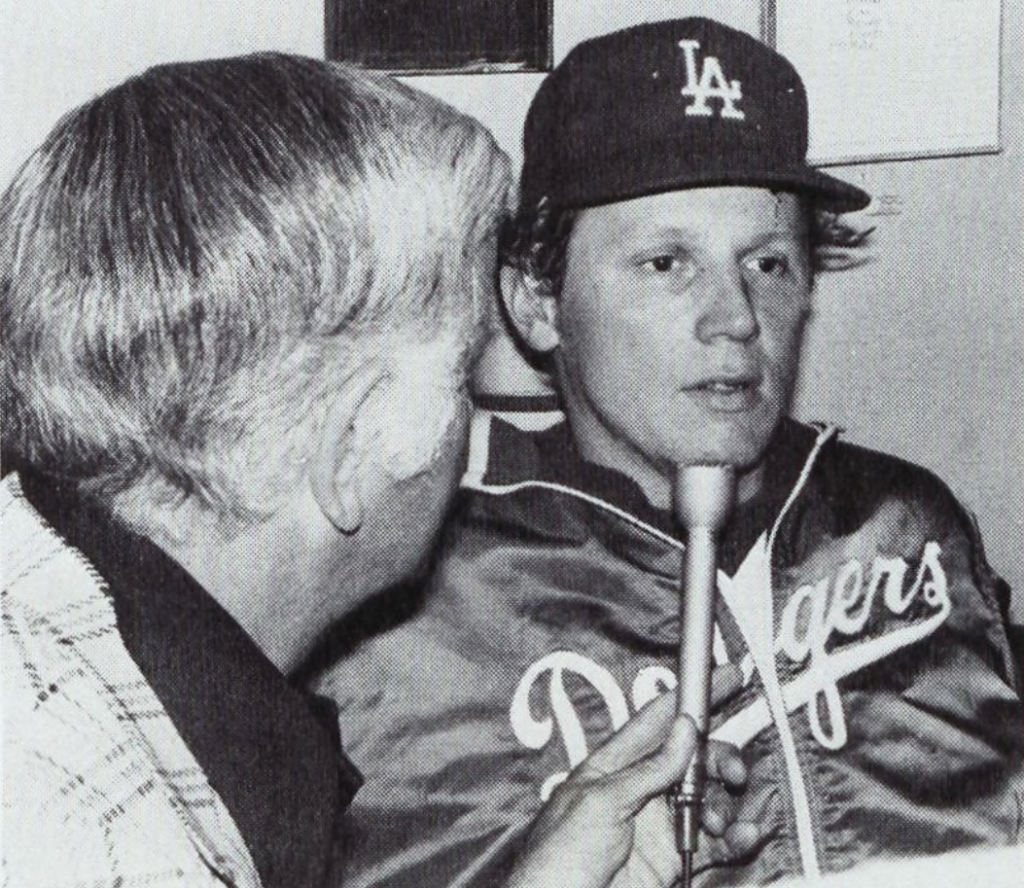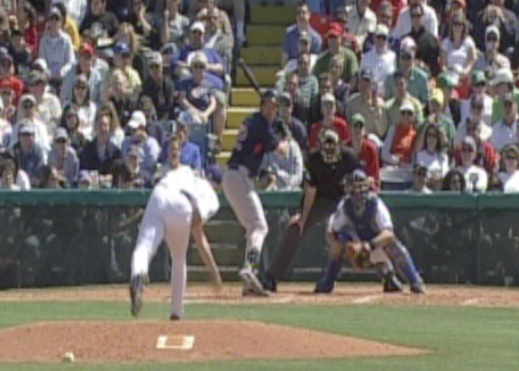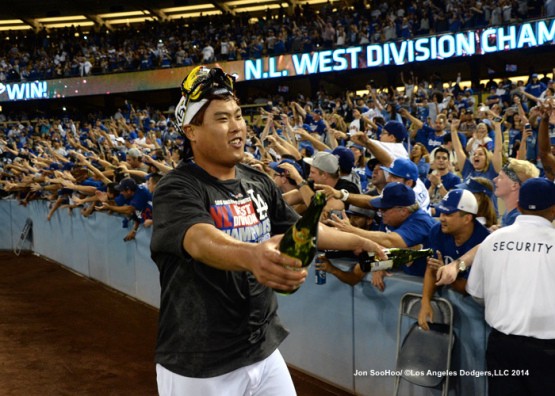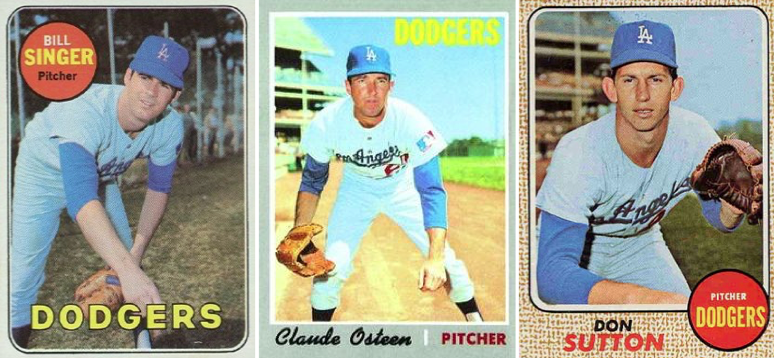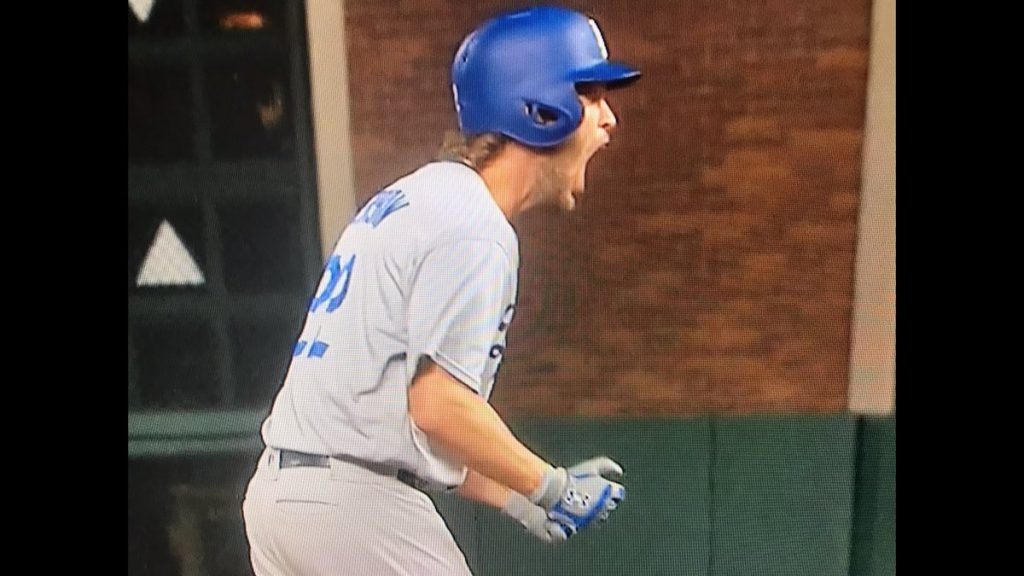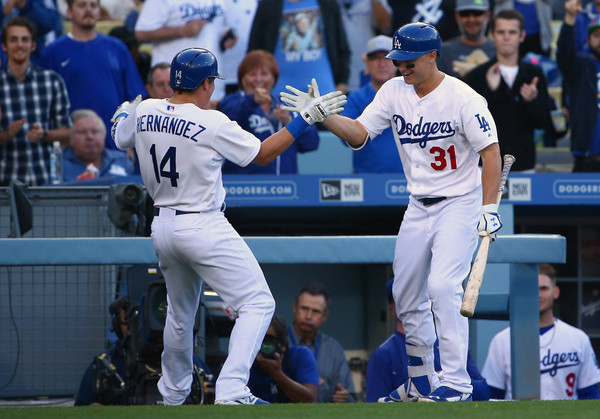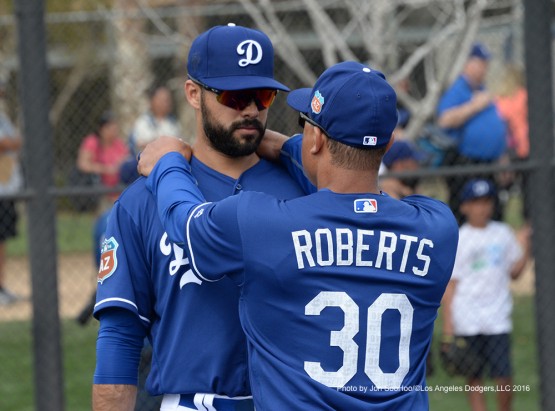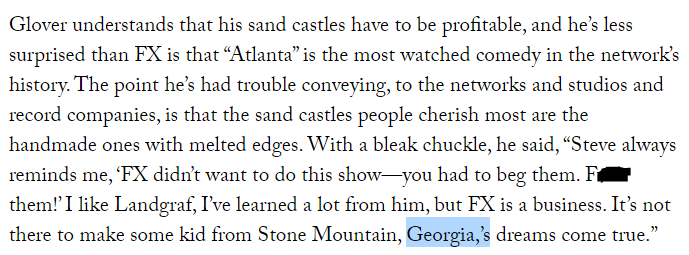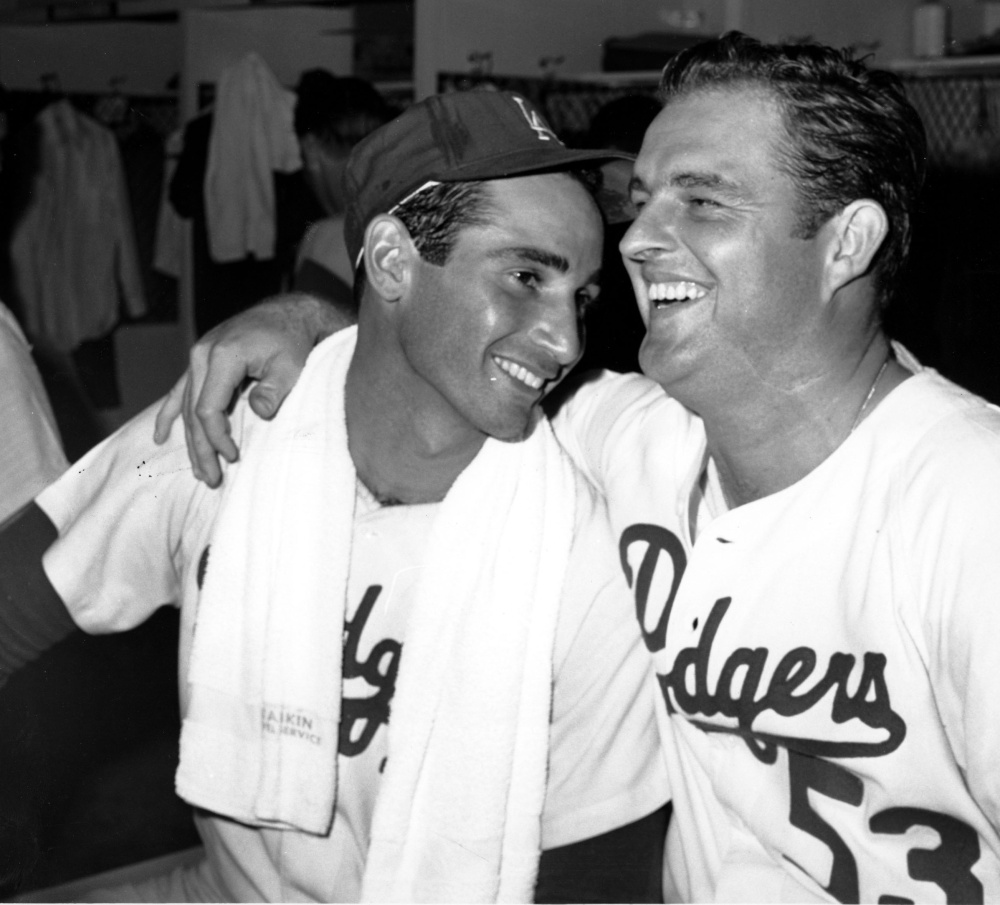Previously: “The mechanics of dating: Lesson 76”
Author: Jon Weisman (Page 19 of 379)
While Spring Training is a time for obsessing who will be on the Dodgers’ 25-man roster on Opening Day, Opening Day itself begins a season’s worth of mania over who bats where in the Dodger starting lineup.
With Part Four of Brothers in Arms: Koufax, Kershaw, and the Dodgers’ Extraordinary Pitching Tradition (pre-order now!), we head directly into the pitchers of my own childhood, the ones I can describe to you first-hand. This section of the book is titled “The Modern Classicists,” underscoring that while we were a long way from the black-and-white era of the Boys of Summer, there will always be something pristine and Old School about the pitchers who carried the Dodgers from the 1970s into the ’80s.
Believe it or not, Friday marked 10 years since Vin Scully announced Clayton Kershaw’s arrival with the debut of “Public Enemy No. 1.” (Sad to say I’m two days late with this anniversary post.)
Though the ultimate prize has eluded the 21st-century Dodgers, Los Angeles enters 2018 trying to become the third team in the division era (now entering its 50th season) to win at least six straight division titles, after only the 1998-2006 New York Yankees and the 1995-2005 Atlanta Braves.
The Dodgers’ path to five consecutive division titles hasn’t been without its speed bumps.
Vin Scully spoke for about 15 minutes to the kids of Simi Valley to kick off Opening Day of Simi Youth Baseball last week, and it’s music to our ears. (Link via Ernest Reyes of Blue Heaven.)
As we move forward in previewing the May 1 release of Brothers in Arms: Koufax, Kershaw, and the Dodgers’ Extraordinary Pitching Tradition (pre-order now!), we leave behind “The Two Emperors” and find out in Part Three how the Dodgers transitioned on the mound from the 1960s to the 1970s without Sandy Koufax and Don Drysdale.
Three men who were teammates of the Hall of Fame duo — along with one extraordinary pitching coach — paved the way.
Addressing the strong possibility that Clayton Kershaw will opt out of his contract with the Dodgers after the 2018 season, Dodger owner and chairman Mark Walter told Jon Heyman of FanRag (I still can’t believe that’s the name) Sports that the future Hall of Famer “should be a Dodger for life.”
Walter’s waxings are warmly welcome but shouldn’t be shocking. Short of seeing the front office and the pitcher side-by-side at a press conference, nearly every sign you might observe points to the Dodgers and Kershaw forming a more perfect union.
If the Dodgers had nothing more than a platoon of Kiké Hernández and Joc Pederson entering the season, I’d be fine with the Dodgers in left field.
In a typical Dodger batting order, left field might basically be the No. 7 spot. If Logan Forsythe bounced back from his 2017 struggles at the plate, the left fielder could bat as low as eighth.
Chris Taylor, CF
Corey Seager, SS
Justin Turner, 3B
Cody Bellinger, 1B
Yasiel Puig, RF
Austin Barnes/Yasmani Grandal, C
TBD, LF
Logan Forsythe, 2B
You don’t want left field to be a black hole in the lineup — certainly, by the time the postseason race heats up, you don’t want any black holes in the lineup. But entering the season, the Dodgers are in fine shape with Hernández, who in his career has an .883 OPS with 19 homers in 382 at-bats against left-handed pitching, and Pederson, who has OPSed .823 against righties with 54 homers in 953 at-bats (23 homers per 400 at-bats).
Each player has gone through an extended slump in his career, but both recalibrated by last October — in the glare of the postseason, no less. And, both Hernández and Pederson will be 26 years old for most of the season. It might seem like they’ve been around for a while, but they’re just entering prime time.
In particular, Pederson is a buy-low candidate. His contact rate has improved each of the past three years. His on-base percentage was a career-worst .331 in 2017, but his batting average on balls in play (.241) was the unluckiest of his three full seasons in the majors. In his poorest year, Pederson’s OBP was only .023 behind Chris Taylor in Taylor’s best year.
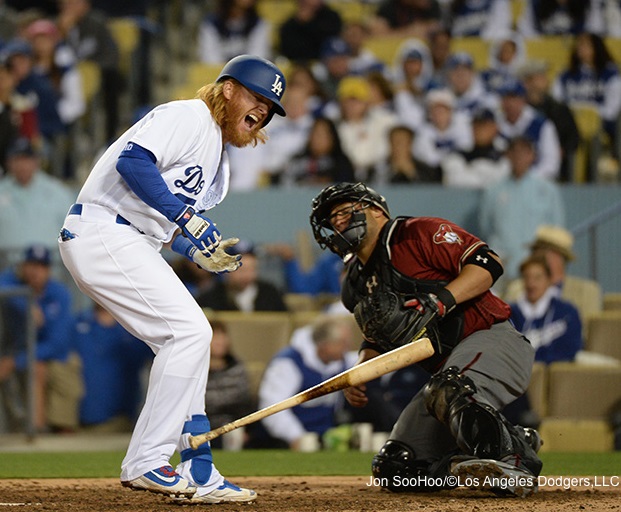
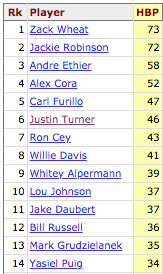 One other thread in the Andre Ethier legacy is that he is the all-time Los Angeles Dodger leader in times being hit by a pitch, with 58. But at the rate Justin Turner has been going, Ethier’s reign might not last the year.
One other thread in the Andre Ethier legacy is that he is the all-time Los Angeles Dodger leader in times being hit by a pitch, with 58. But at the rate Justin Turner has been going, Ethier’s reign might not last the year.
Last year, the Dodger third baseman set a single-season franchise record with 19 HBPs, breaking Alex Cora’s previous and literal mark of 18. (Cora also held the Los Angeles career mark before Ethier.) That gave Turner 46 plunkings as a Dodger, putting him within 12 of Ethier — and Turner has averaged 14 HBPs over the past three seasons.
The last official hit by the National League champion Los Angeles Dodgers in 2017 came from Andre Ethier, whose RBI single to right field in the sixth inning of Game 7 of the World Series put him on base for the 1,994th time in his regular-season and postseason career.
For this Spring Training, Ethier remains delayed at the gate with players still waiting to board major-league teams this year. What’s worse is that he’s not even in Group A or Group B. He’s camped out with his luggage near the Sbarro stand, hoping for a middle seat at best.
This isn’t even about the serial comma, which has a subjective argument that can support it even if the objective argument doesn’t hold up. This, from the current New Yorker profile on Donald Glover, is just an abomination.
In this week’s preview teasing the May 1 release of Brothers in Arms: Koufax, Kershaw, and the Dodgers’ Extraordinary Pitching Tradition (pre-order now!), we come to two pitchers that you’ve heard a little bit about and then some: Sandy Koufax and Don Drysdale. It’s possible that more words have been written about those two than any other hurlers in Dodger history. So what could Brothers in Arms possibly offer?
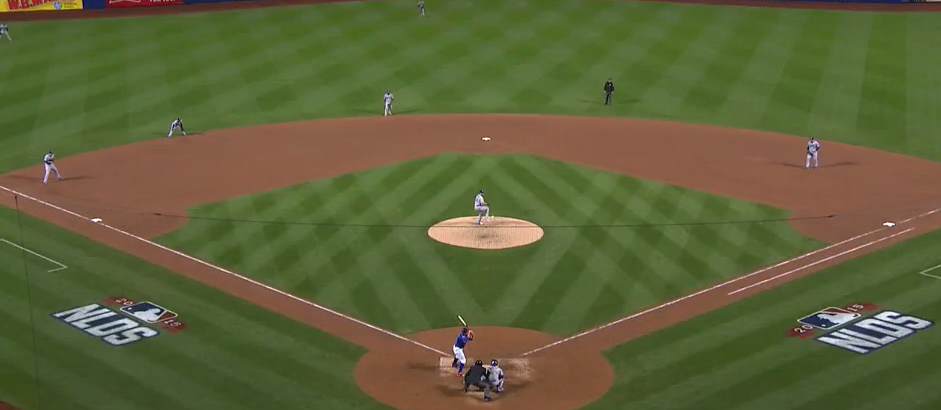
Screenshot: Gammons Daily
Clayton Kershaw, I think it’s safe to say, was a shifting cynic when aggressive defensive maneuvering took center stage a couple years back. Speaking with David Vassegh in this interview that ran Friday on AM 570, Kershaw conceded that he had come around to embrace defensive shifts (which always made sense) …

